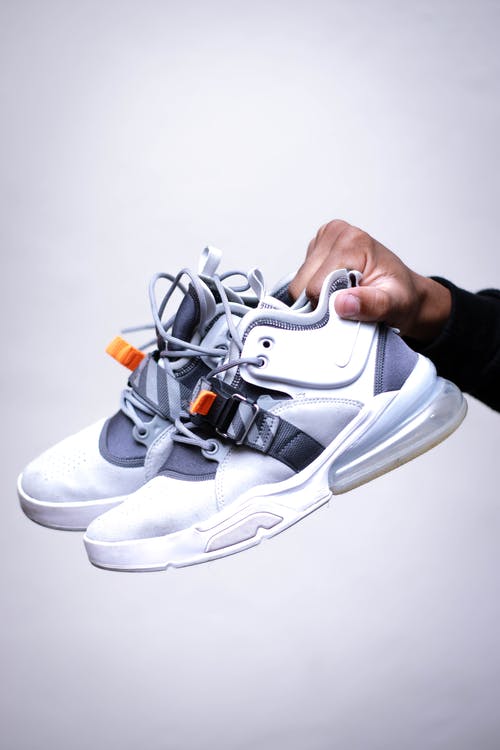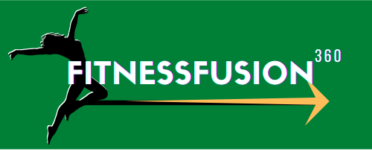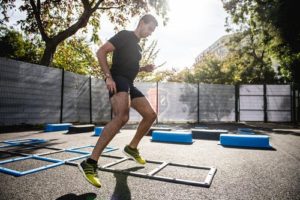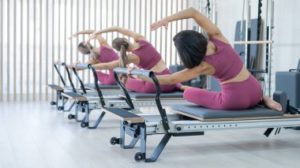How To Start A Workout Routine If You Are Over-weight

by: David Dack
Starting an exercise program as a beginner is tricky for everyone, but it’s especially harder for those with too many pounds to lose.
When you’re overweight, every movement you make places undue pressure on your joints and muscles. This may lead to post-workout aches and pains. When ignored, these niggling pains can turn into real injuries.
However, if you’re overweight, taking up exercise is a great option that can help you get in shape, increase your confidence, improve your health, and achieve a healthy weight.
So, how do you get started?
Here are the steps you need to take to safely and effectively start a workout routine when you’re overweight. Sounds good? Let’s get started.
See your Doctor
Your first step toward making exercise a part of your daily routine is getting the green light from your doctor first. This is a key step for anyone who’s taking exercise for the first time, but more important if you’re overweight. The last thing you’d want when trying to get a workout plan going is hurt yourself from the get-go. It’ll just kill your spirit.
Also, remember to share your pre-existing or previous injuries that might affect your ability to start and/or keep a regular workout routine.
Start with Walking
So how do you get started without risking injury or discomfort? It’s quite simple. Walk. Walking is one of the ideal exercises for your body. It’s a low impact exercise that can be done by most people. It can also vary in both length and intensity.
Begin by walking 3 to 4 times a week and work your way up. After a few weeks in, you should be fit enough to walk every day for over an hour without trouble.
Make your walks more fun by pairing up with a friend or adopting a dog. You can also join walking groups if you want to run exercise into a social activity instead of being a chore thing you have to do.
Get the Right Gear
When you’re overweight, you’d need to find the right gear. For starters, compression gear works very well for overweight trainees. These are usually made of lightweight, stretchy materials that pull moisture away from the skin, keeping you dry and comfortable, while providing extra support. It’ll also help you avoid chafing, which is a common annoyance for overweight people.
The mix of moisture, skin, and rubbing clothes result in chafing, especially in prone spots, such as the inner thighs, armpits, etc. This condition can lead to raw skin and rashes.
If your inner thighs are particularly problematic, opt for running tights. These can help prevent the inner thigh region from getting rubbed raw as you work out. You can also use anti-chaffing lubricants, such as Body Glide.

What you’ll also need, especially if you’re planning to do some running, is a pair of supportive and comfortable shoes, and a good fit is non-negotiable.
Do it for Yourself
If you’re reading this, it most likely means that you have a serious weight issue. You might be the most overweight person in the gym. Because of this, you might be drawing a lot of attention, and not all of it might be positive.
Sure, most people tend to be supportive, but not everyone. There always be the naysayers, especially some of your closest friends and family, that will try, consciously or unconsciously, to compromise your program. With friends like these who needs enemies, right?
Here’s what you need to do: Concentrate on yourself and nobody else. When you catch yourself worrying about what other people think, remind yourself how challenging it is to do what you’re doing.
Listen to Your Body
As far as I can tell, this is the most important piece of advice if you’re serious about turning your exercise routine into a sustainable habit.
Take care not to overdo it, whether you’re lifting weights, jogging, swimming, or whatever.
Sure, expect a bit of discomfort—after all, nothing good happens when you stay in your comfort zone. Your heart rate should raise, you should be sweating, but doubling over in pain, or vomiting, is a sure sign for danger.
Ease off if you’re experiencing any of the following symptoms:
- Vomiting
- Nausea
- Intense chest pain
- Dizziness or vertigo
- Severe muscle or joint pain
- Heart palpitations
Conclusion
There you have it! The above guidelines are all you need to start working out as an overweight person. Keep in mind that the type of training you choose is less important than the fact that you’re doing it.
Don’t be afraid to take up exercise because you’re overweight—in fact, that’s enough reasons in itself. Give yourself credit for trying and planning to change your life around. It takes a lot of effort to do what you are planning or have already started to do.
Meet The Author: David Dack is an established fitness blogger and running expert. When he’s not training for his next marathon, he’s doing research and trying to help as many people as possible to share his fitness philosophy. Check his blog Runners Blueprint for more info.









